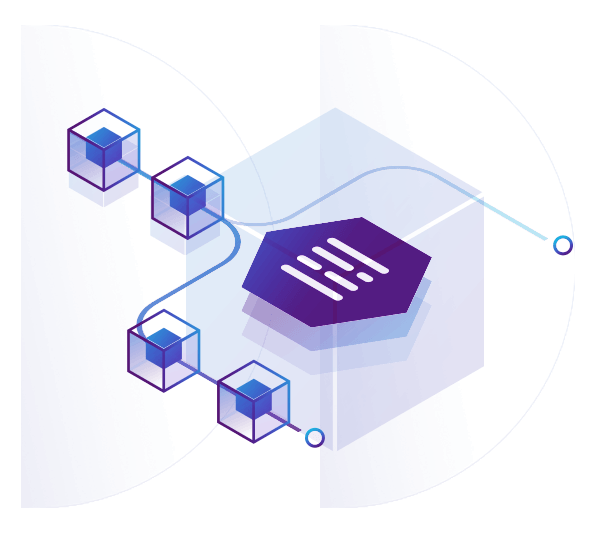42Crunch: APIFirewall as a simple Docker Image
In this post is demonstrated how to to run 42Crunch API Firewall as a simple Docker container image

Introduction
In this demonstration I will show how to protect basic Microsevices using Micro-APIFirewall. In our case, we have a basic SpringBoot app that is fully audited, scanned and protected by 42Crunch platform.

Getting Started
We will use the 42Crunch API Firewall official image hosted at DockerHub, here is the image location: https://hub.docker.com/r/42crunch/apifirewall , please refer to that default image base in order to complete this POC/Demo.
What to Protect ?
If you had arrived to that question, you must be able to understand 2 points about API Protection:
You will have initially 2 points that will be covered here:
-
Security Auditing (Score)
-
Conformance Scaning (Level)
The number one bullet is related to how secure is you API to go live, it means: How is your protection level on the whole internet?

The Audit Score above is ok in order to be pushed to production. Don’t forget, that those Security verifications can be done during the API designing phase, yet using your preferred IDE (Intelij, VSCode, Eclipse etc), or even using your CI/CD pipeline tool, such as Bitbucket, Jenkins, Azure, Bamboo and others.
Companies from anywhere in the world can introduce security best-practices in their entire APIs and Microservices development life-cycle, in many different architectures.

Focusing on API Firewall
In this demo we will focus on the API Firewall (Guardian). The first thing we have to do is to go in the 42Crunch platform, and configure the API Firewall to some specific(s) API(s), when we do that, we can get a token in order to connect the on-premises Micro API Firewall to the 42Crunch platform running on cloud. You have to the 42Crunch Console’s left main menu in the option Protect, a Popup will show up, and you will have to select the API from an existing collection that you want to protect. Here a basic demonstration if you have a collection ready to be protected by the API Firewall (keep in mind that just APIs with a score of more than 70 can be protected by the API Firewall).

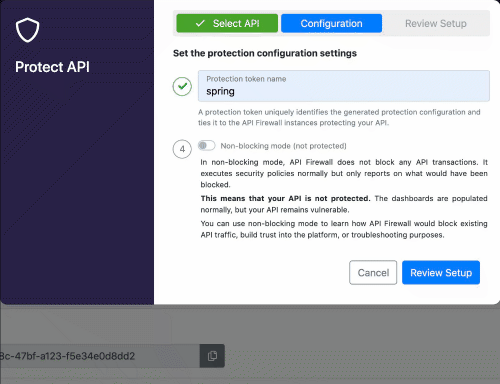
As you noticed, you configuration had generated a token, we will must use this later.
The Dockerfile
We will extend the 42Crunch’s default image in order to pass the certificate files as you can see in the following code listing:
FROM 42crunch/apifirewall:latest
COPY ./cert-2/myapis.docker.local/*.pem /opt/guardian/conf/ssl/
COPY ./cert-2/myapis.docker.local/*.key /opt/guardian/conf/ssl/
When we run the Docker image, we will have to pass the env.list file that contains the whole informations and environment variables that we have to pass:
#env.list file
#Variables used in that Docker machine
PROTECTION_TOKEN= #### THAT COMES FROM 42Cruch Platform from the previous step
SERVER_NAME=myapis.docker.local
LISTEN_PORT=443
#TARGET_URL=https://lbspring.42crunch-ns.207.244.225.188.xip.io/42crunch-auth0
TARGET_URL=http://207.244.225.188:32095/42crunch-auth0
#ENV LISTEN_NO_TLS=1
LISTEN_SSL_CERT=fullchain-cert-with-ca.pem
LISTEN_SSL_KEY=myapis.docker.local.key
GUARDIAN_INSTANCE_NAME=springboot-sample
LOG_LEVEL=debug
ERROR_LOG_LEVEL=debug
You can use the following command line in order to execute our Docker Image:
The API Firewall will protect a simple SpringBoot service that is deployed into a Kubernetes/Rancher environment with auto-signed certificates, hosted here: https://lbspring.42crunch-ns.207.244.225.188.xip.io/42crunch-auth0 . If for some reason, you want to tweak this Docker Image as well here is the repository link: https://hub.docker.com/repository/docker/edgars/spring-auth0
Tip: awk '{printf("% 4d %s\n", NR, $0)}' Dockerfile (for printing line numbers)
Running the API Firewall (Guardian)
Let’s execute the API Firewall running first the
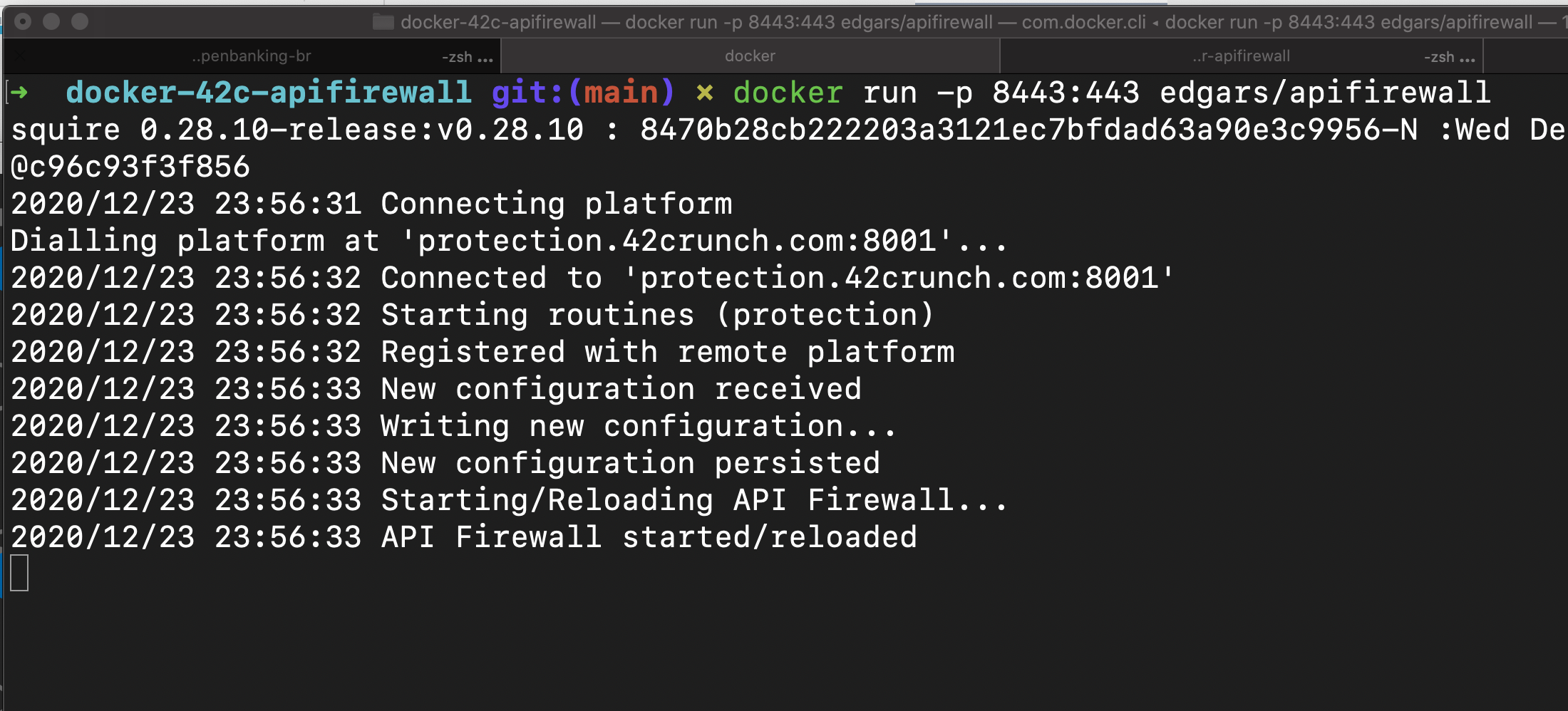
Invoking API Firewall and getting an error in that layer:

Tracing the request in 42Crunch Dashboard:
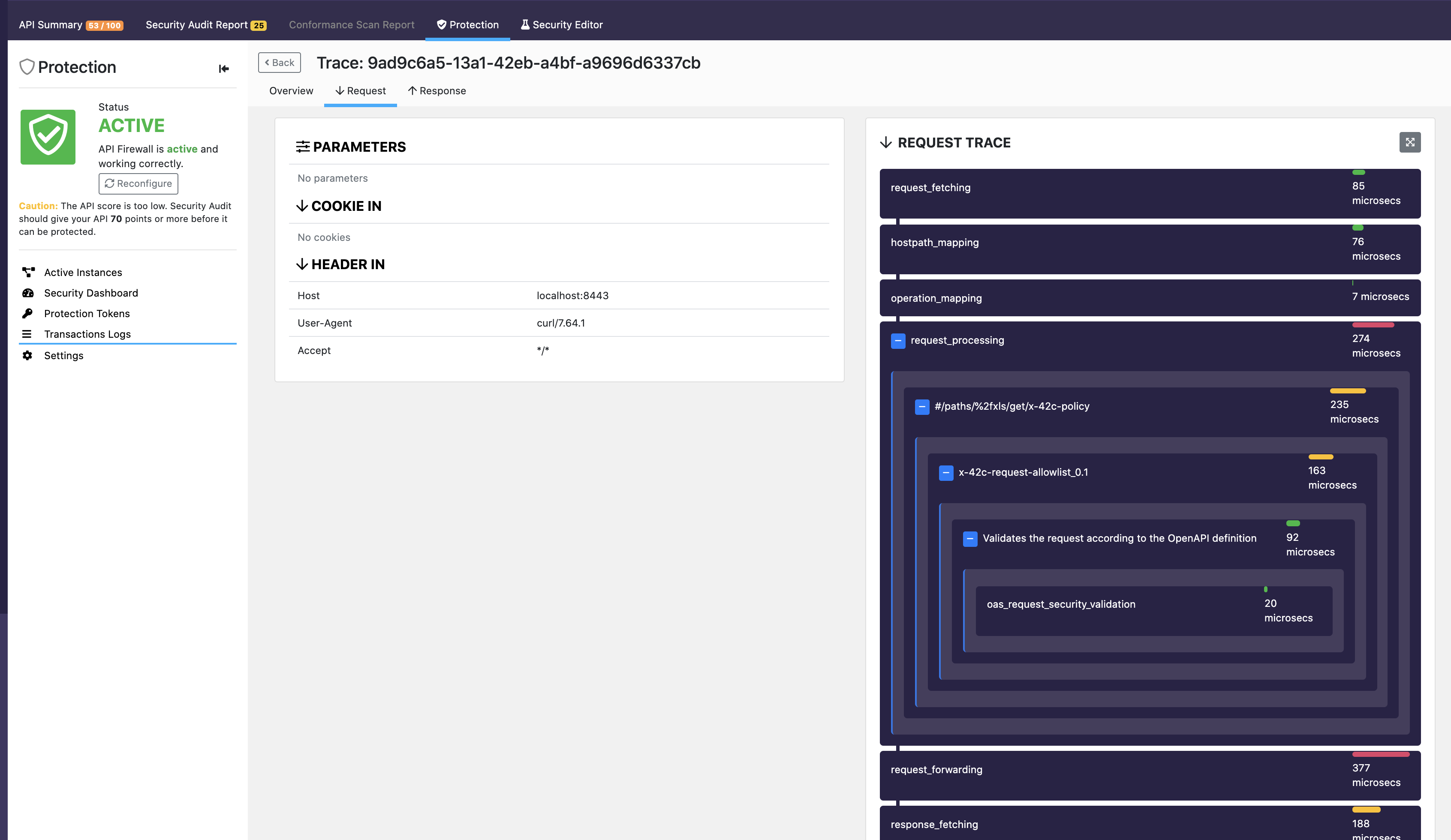
Certificates
Anything related to certificates sometimes requires some good attention, this demo is not an exception. However, there is a utility that will help you a lot, it is here on this poc/demo respository: https://github.com/edgars/docker-42c-apifirewall/blob/main/cert-2/idca . In order to make this demonstration to work, I had to add some entries into my /etc/hosts/, where I added the following line:
#42Crunch Docker sample
127.0.0.1 myapis.docker.local
The configuration above allows to refer my localhost/127.0.0.1 as a 'fake' fully qualified domain (FDQN).
Then I used the simple openssl command line as it follows :
openssl req \
-newkey rsa:2048 -nodes -keyout firewall-key.pem \
-x509 -days 30 -out firewall-cert.pem
Don’t forget to add the information about FQDN during the command line questions.
The generated files shall be used in the env.list file, once those certifiacte’s information is used by the API Firewall instance.
You can use also the idca , an utility provided by 42Crunch here: https://github.com/42Crunch/resources/blob/44f01abb7299775d5bb47be1182c5d5e30fd5984/firewall-deployment/tools/idca , please, just download and type the following command:
./idca myapis.docker.local
The command above, will generate your certificates.
graph LR
A[idca] -- generates --> B((Circle))
A --generates --> C(Round Rect)
B --> D{api firewall}
C --> D
You can get some ideas in the folder /cert2 in the repository as well.
Important Docker Commands
docker exec -it <Container_ID> sh
Step by Step Demo
Step 1 - Cloning the git repo
Into a VM (vagrant box, or anyone), clone the git repo using the following command:
git clone https://github.com/edgars/docker-42c-apifirewall.git
cd docker-42c-apifirewall
Step 2 - Building the Docker Image
Inside the folder docker-42c-apifirewall, please execute the following command:
$ /docker-42c-apifirewall# docker build . -t edgars/apifirewall
The output would be something like this:
Sending build context to Docker daemon 19.08MB
Step 1/3 : FROM 42crunch/apifirewall:latest
latest: Pulling from 42crunch/apifirewall
cbdbe7a5bc2a: Pull complete
2f3423c94931: Pull complete
19c0fc490a22: Pull complete
253507af6fbe: Pull complete
5aa7a09f5063: Pull complete
3098faed39e2: Pull complete
3a076437d664: Pull complete
98c34d8089f9: Pull complete
Digest: sha256:ad317d32edb71a7fd5220aa3b9be55a2b7e1feffd19c86d85c5461f5843acc99
Status: Downloaded newer image for 42crunch/apifirewall:latest
---> d801c28de7a3
Step 2/3 : COPY ./cert-2/myapis.docker.local/*.pem /opt/guardian/conf/ssl/
---> b28078088550
Step 3/3 : COPY ./cert-2/myapis.docker.local/*.key /opt/guardian/conf/ssl/
---> 14623b8b46c5
Successfully built 14623b8b46c5
Step 3 - Running the API Firewall (Guardian)
Now, we will run the API Firewall, this repo, contains my keys, if you want to change it in order to use yours, please, change the file env.list please.
$ docker run --env-file env.list -p 8443:443 edgars/apifirewall
The output would be something like this:
root@ubuntu-bionic:/home/vagrant/docker-42c-apifirewall# docker run --env-file env.list -p 8443:443 edgars/apifirewall
squire 0.28.10-release:v0.28.10 : 8470b28cb222203a3121ec7bfdad63a90e3c9956-N :Tue Jan 5 23:41:42 2021 root@4d85136cc398
2021/01/05 23:41:42 Connecting platform
Dialling platform at 'protection.42crunch.com:8001'...
2021/01/05 23:41:43 Connected to 'protection.42crunch.com:8001'
2021/01/05 23:41:43 Starting routines (protection)
2021/01/05 23:41:43 Registered with remote platform
2021/01/05 23:41:44 New configuration received
2021/01/05 23:41:44 Writing new configuration...
2021/01/05 23:41:44 New configuration persisted
2021/01/05 23:41:44 Starting/Reloading API Firewall...
2021/01/05 23:41:44 API Firewall started/reloaded
Step 4 - Testing the API Firewall (Guardian)
Please, execute the following curl invocation:
curl -i -k https://myapis.docker.local/xls
The result will be something like this:
HTTP/1.1 200 OK
Date: Wed, 06 Jan 2021 00:09:13 GMT
X-Content-Type-Options: nosniff
X-XSS-Protection: 1; mode=block
Cache-Control: no-cache, no-store, max-age=0, must-revalidate
Pragma: no-cache
Expires: 0
X-Frame-Options: DENY
Content-Type: text/plain;charset=UTF-8
Content-Length: 23
Hello XLS - plain text
This request was intercepted and handled by the API Firewall, as this resource exists in the API contract, and also the response pattern allows this response, even in a plan text. However, if you try send a request to a path that does not exists or a http method that is not supported, or any validation or policy is not respected, the API Firewall shimes and let your API safe and secure.
Check this example:
curl -i -k https://myapis.docker.local/notexistingpath
The result will be something like:
HTTP/1.1 404 Not Found
Date: Wed, 06 Jan 2021 00:13:58 GMT
Content-Type: application/problem+json
Content-Length: 104
{"status":404,"title":"path mapping","detail":"Not Found","uuid":"2bfdd66b-0151-4349-bd28-b45e6232f7a3"}
That will be result, even if you API is not handling properly the resources and methods that are not mapped.
| UUID | Same UUID in the 42Crunch Console |
|---|---|
| 2bfdd66b-0151-4349-bd28-b45e6232f7a3 | 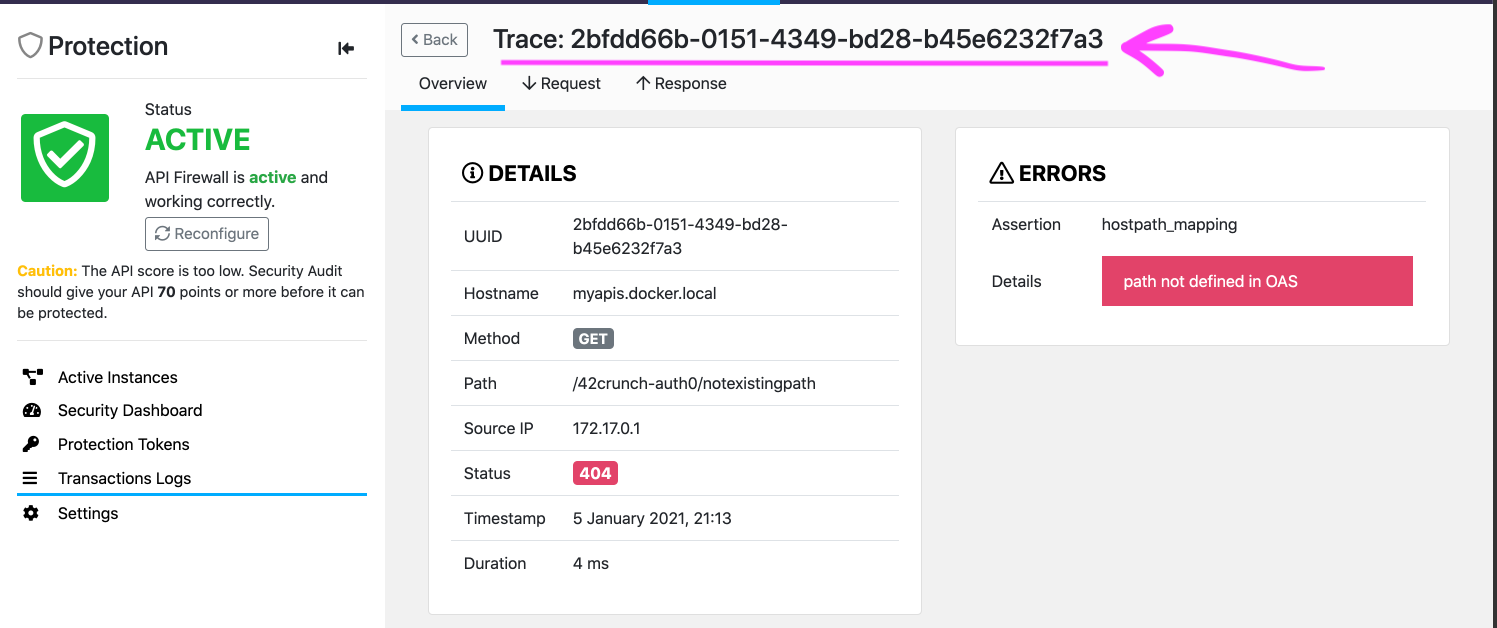 |
Happy Demo/POC
Please, any issue, please open it here in this GitHub repo. Thanks.



